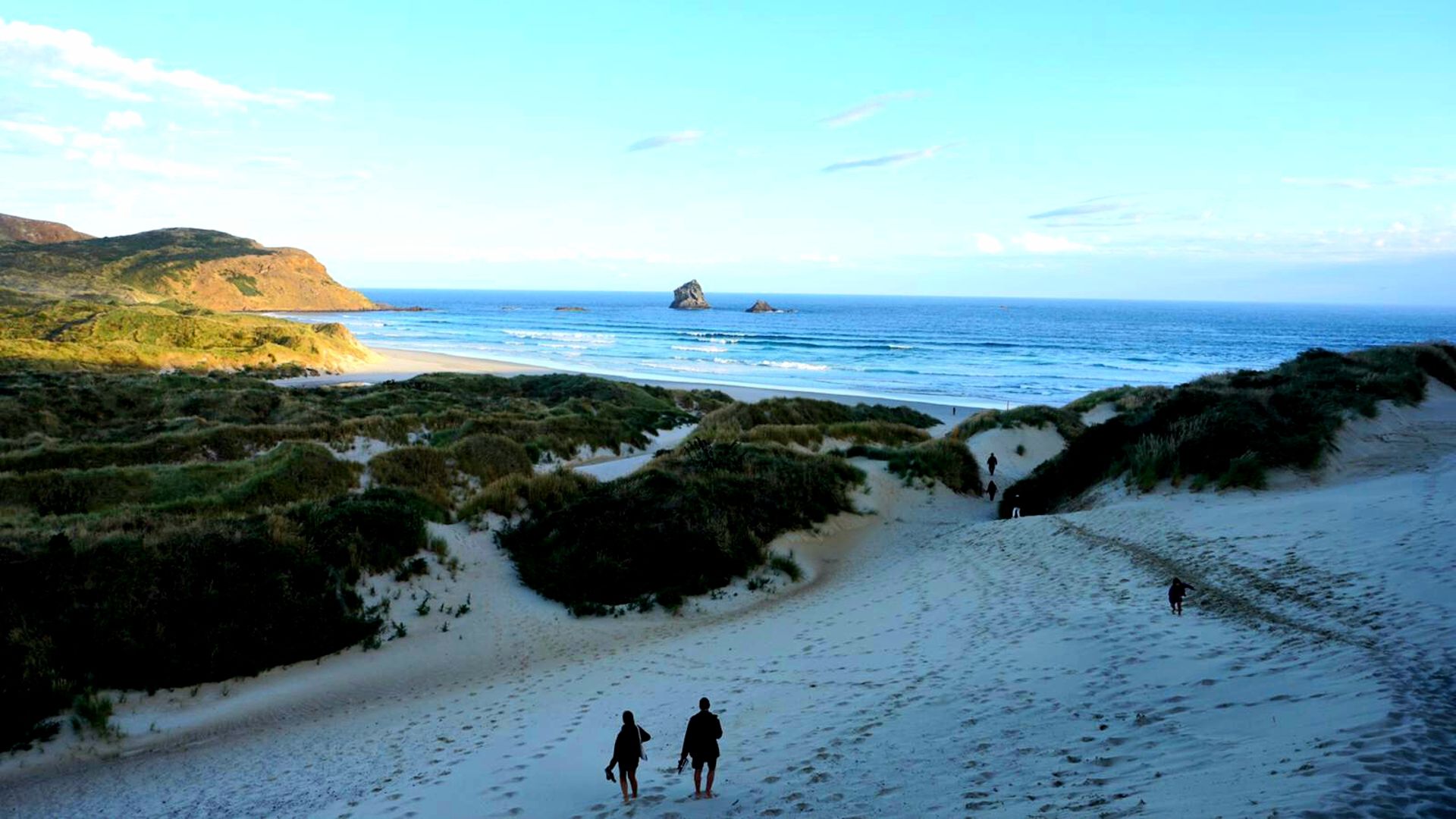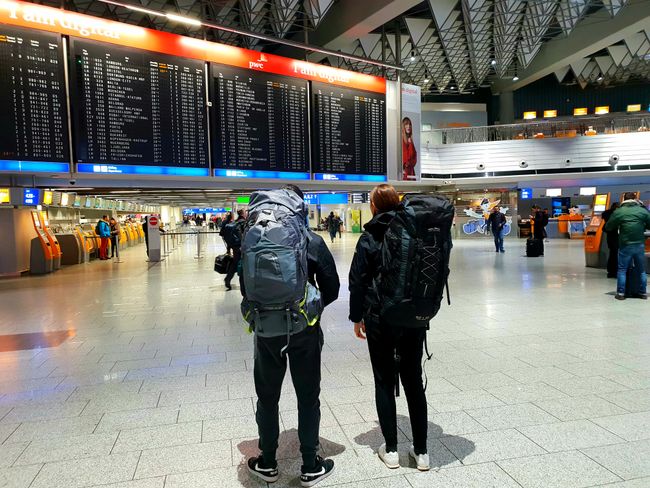New Zealand - North Island (3)
Publicado: 26.02.2019
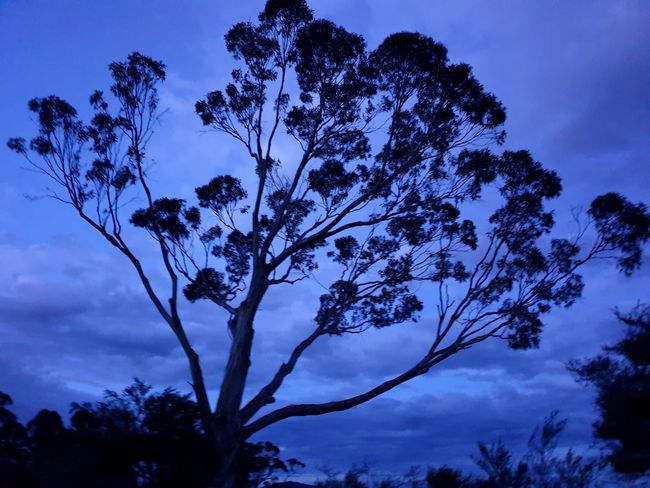
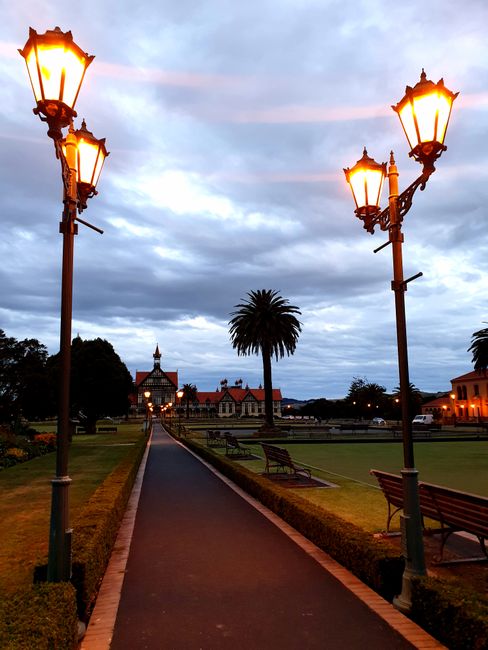
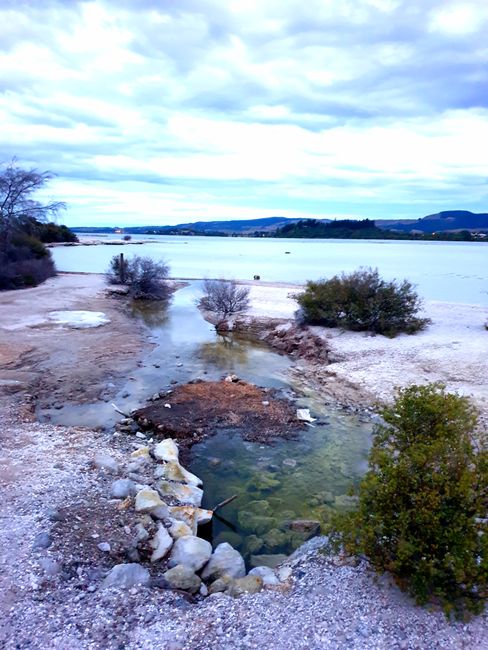
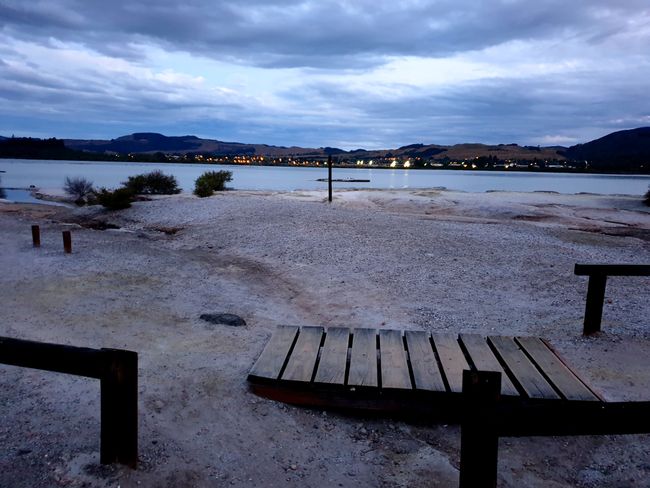
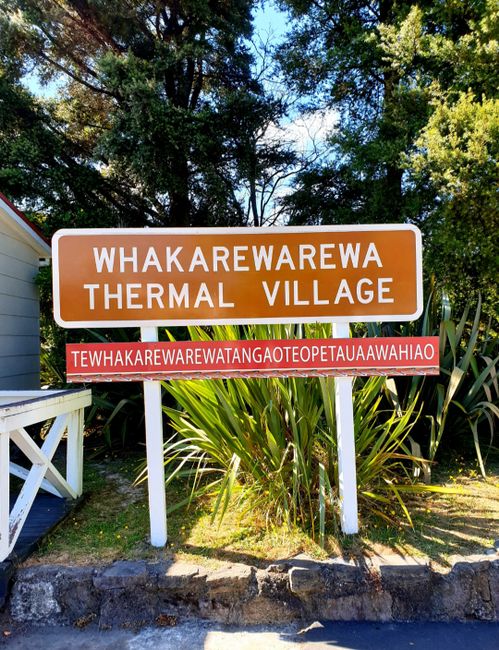
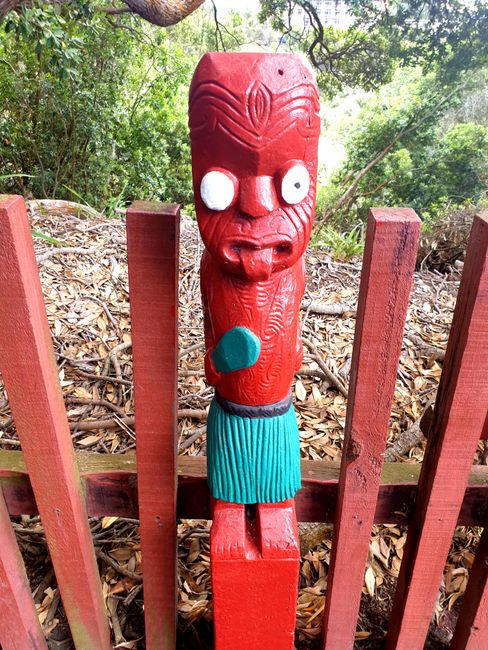
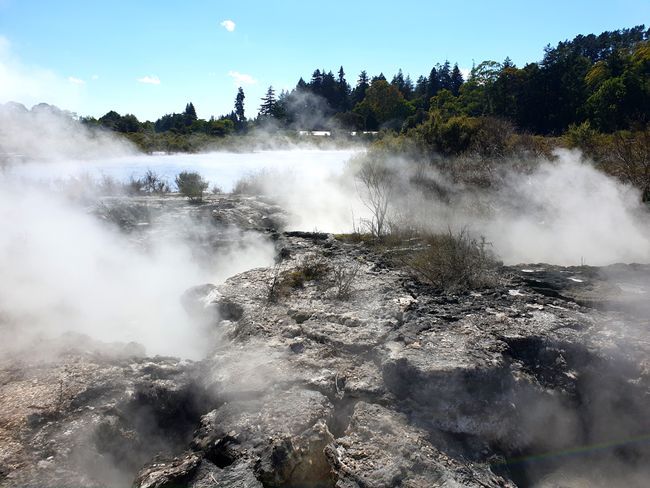
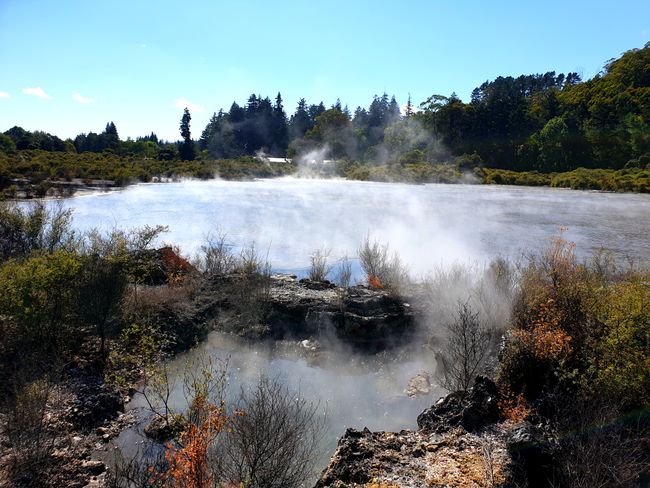
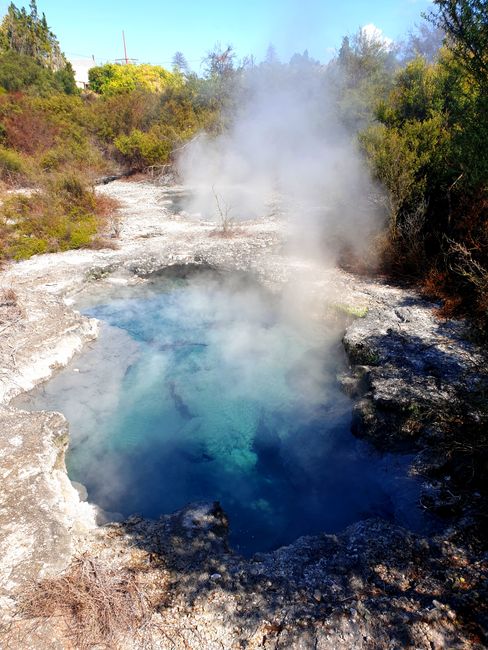
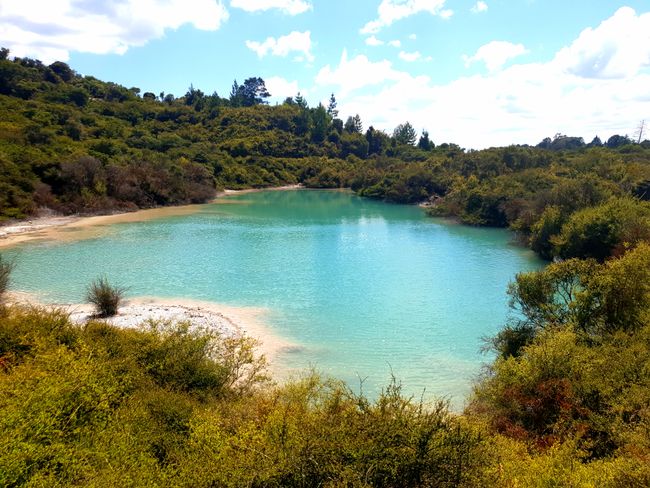
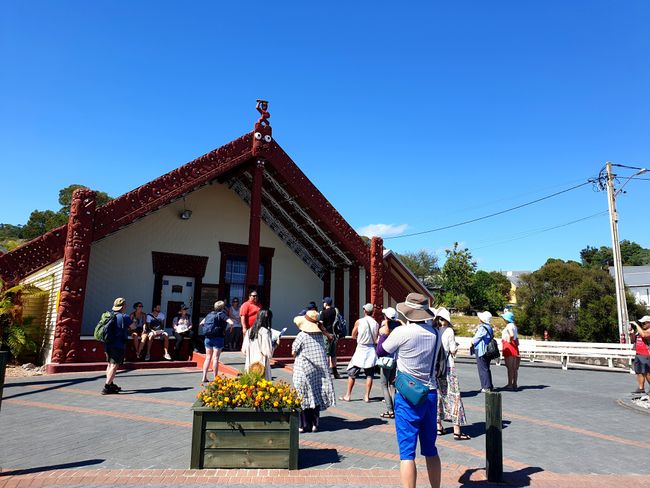
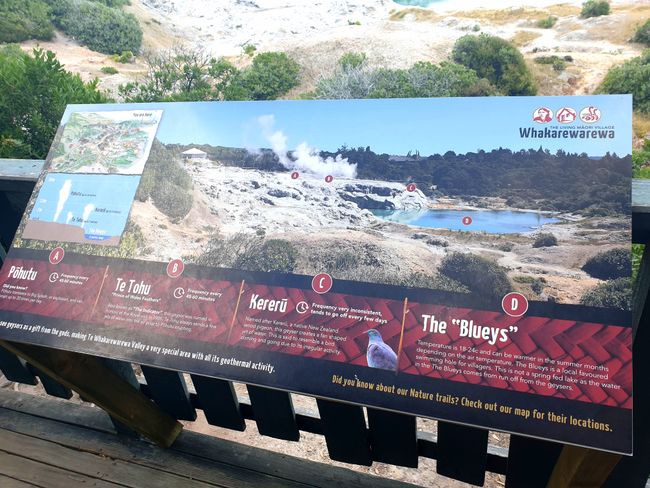
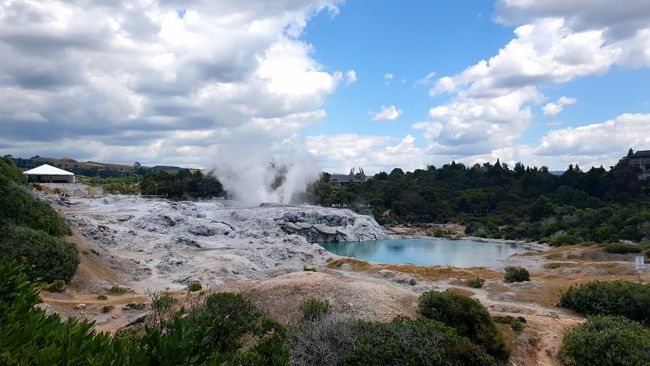
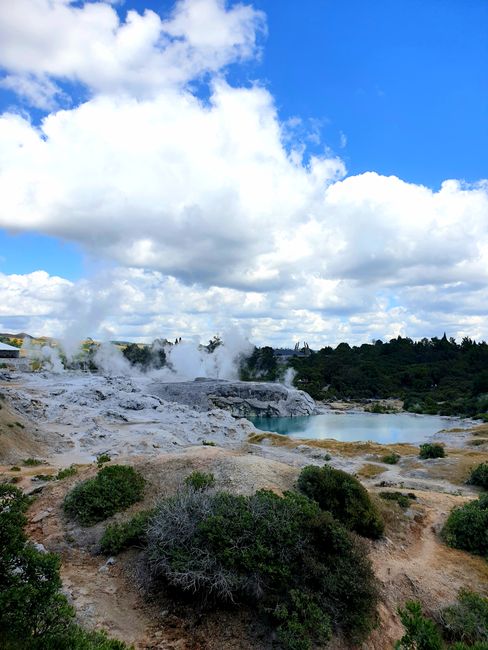
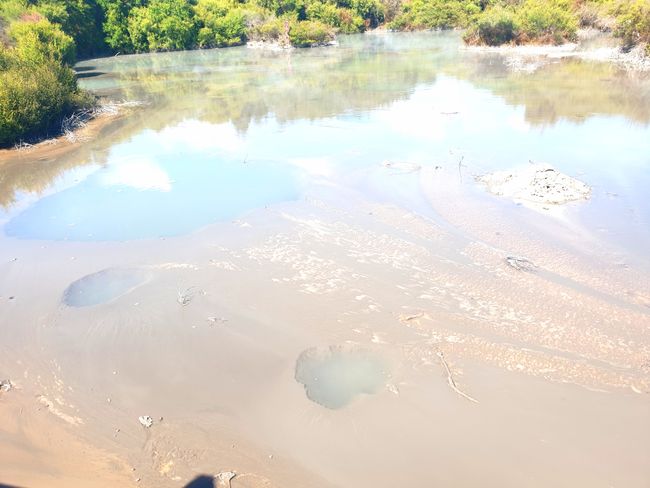
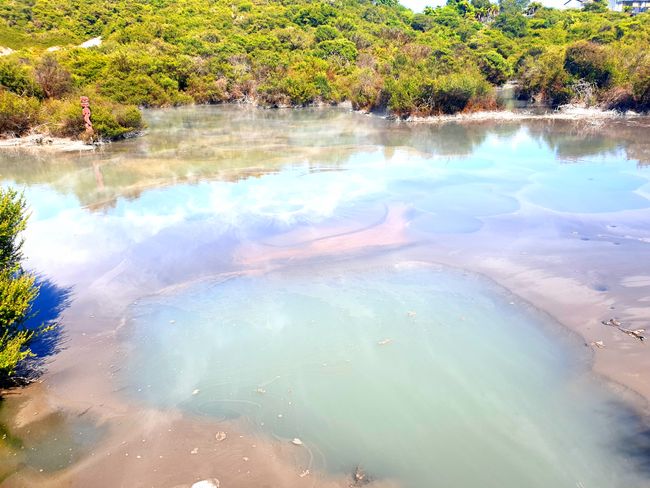
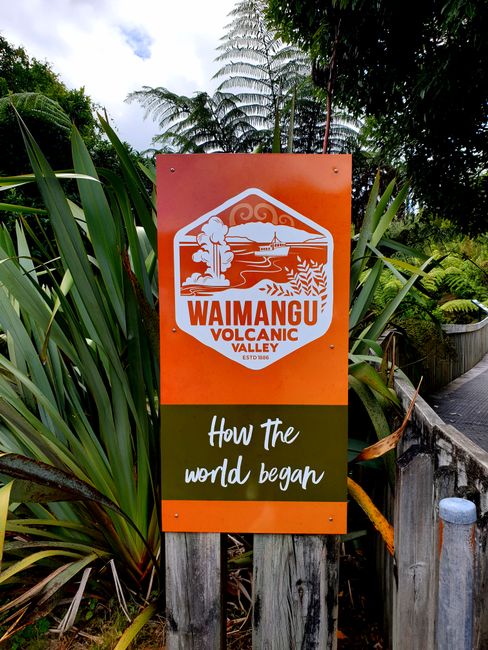
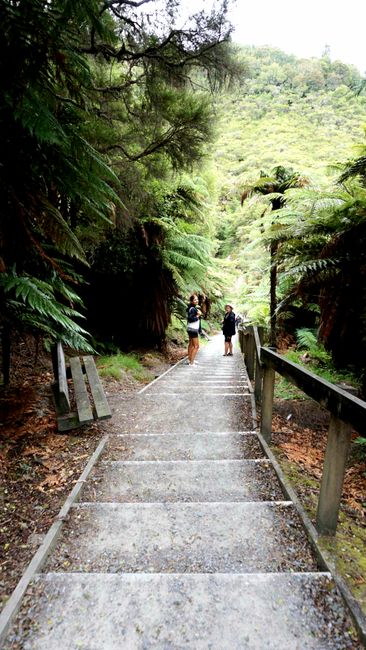
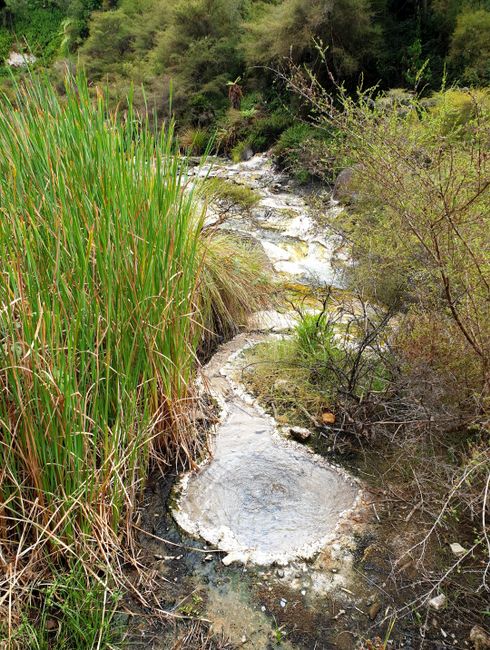
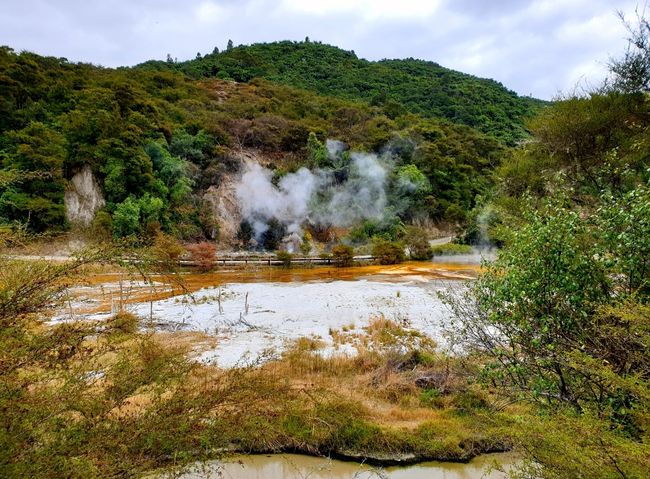
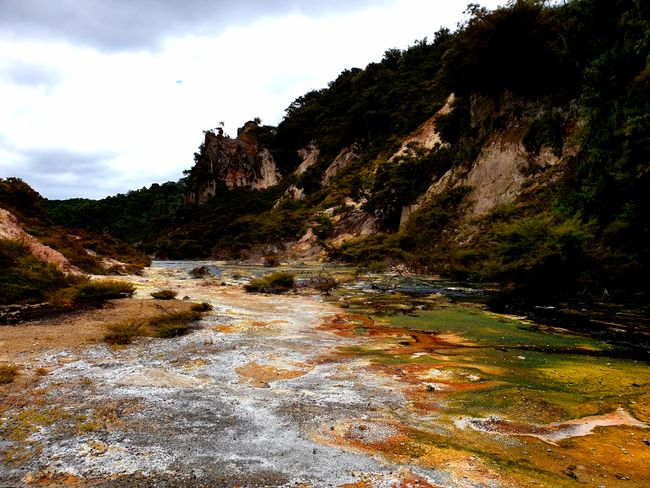
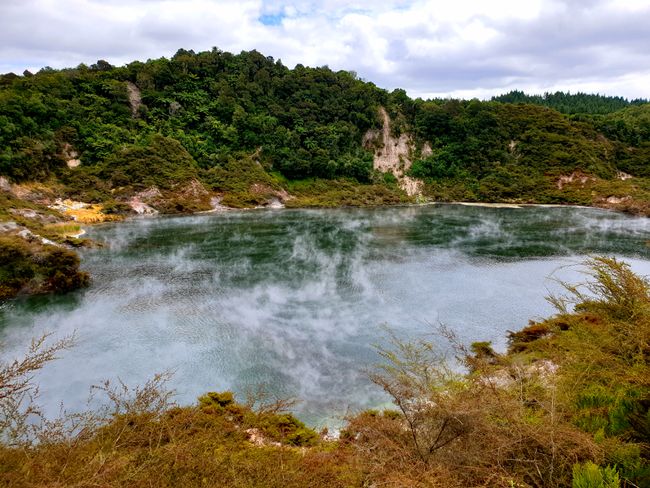
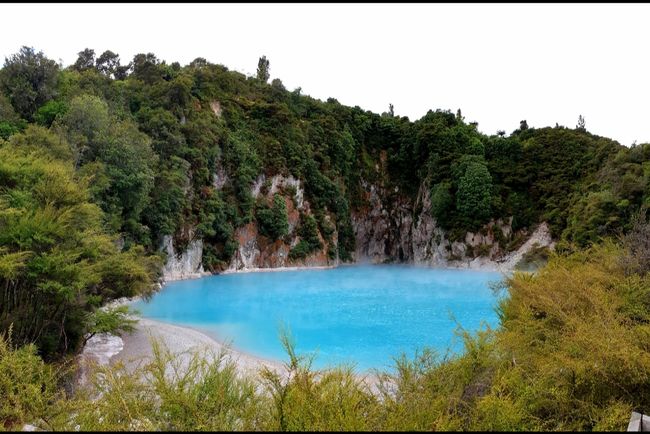
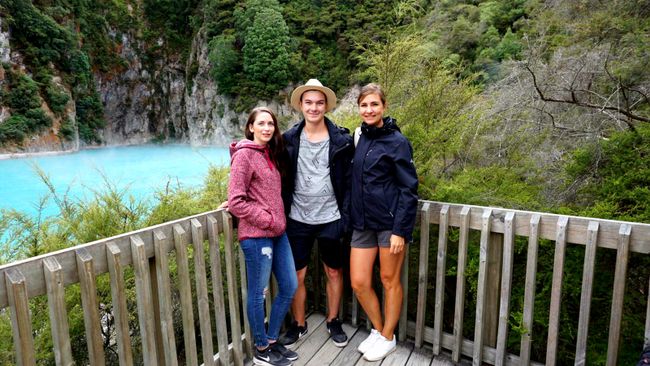
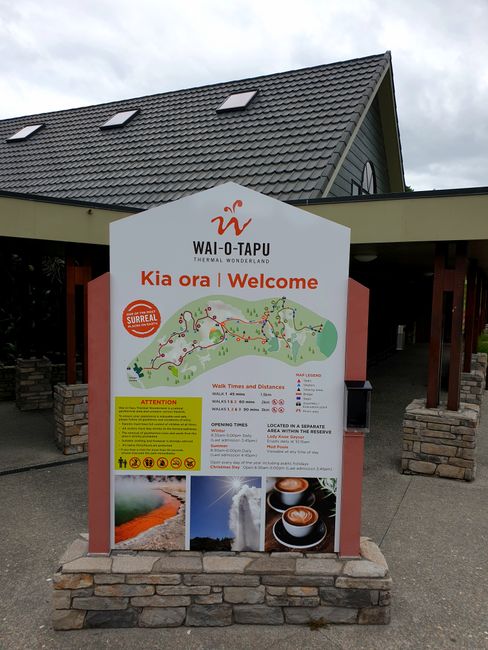
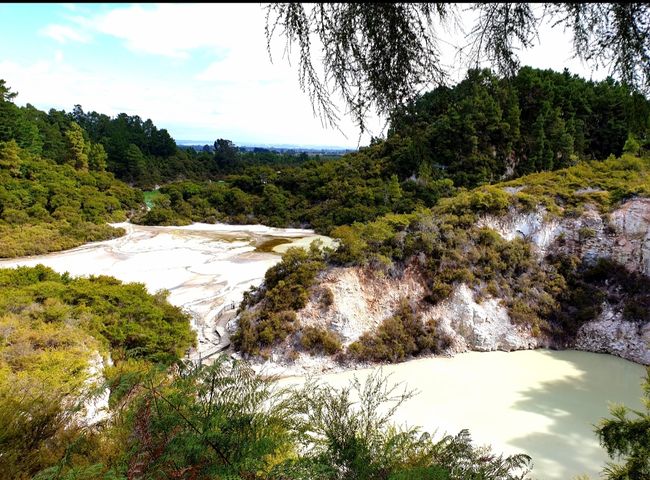
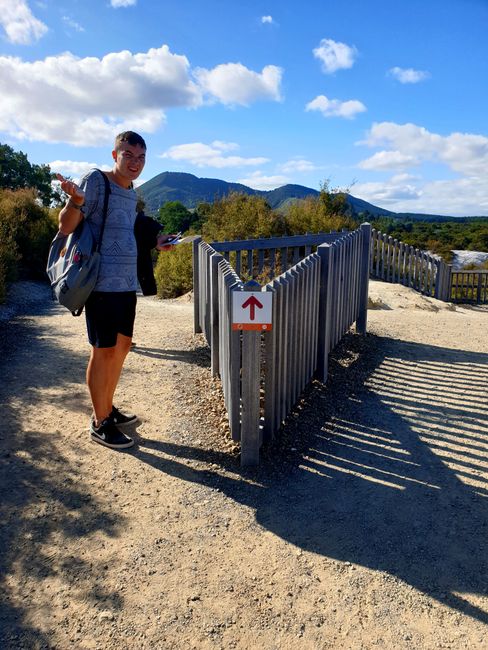

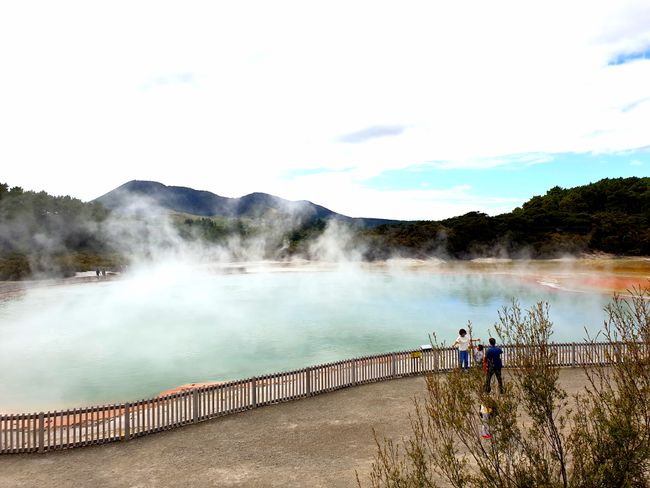
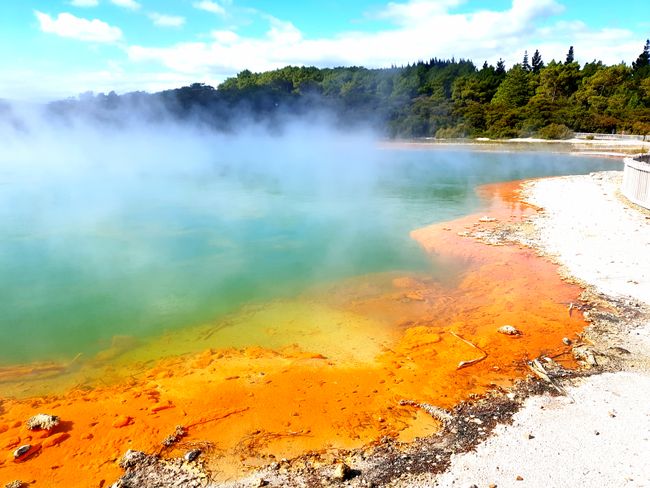
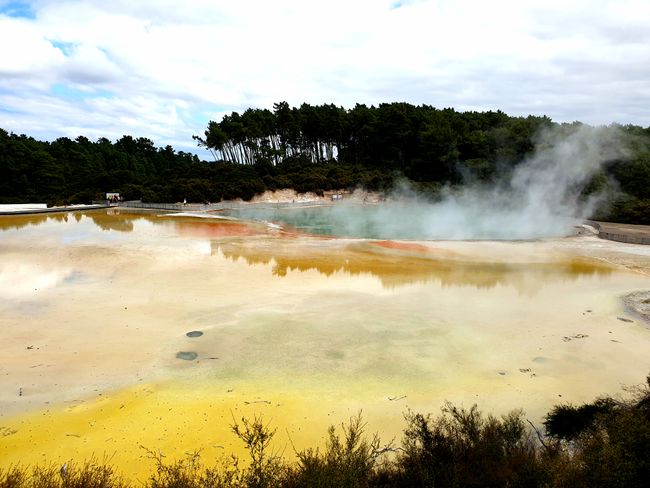
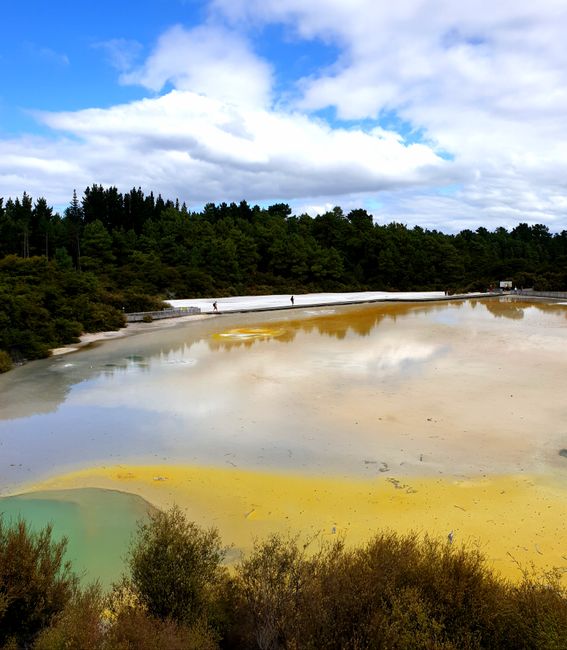
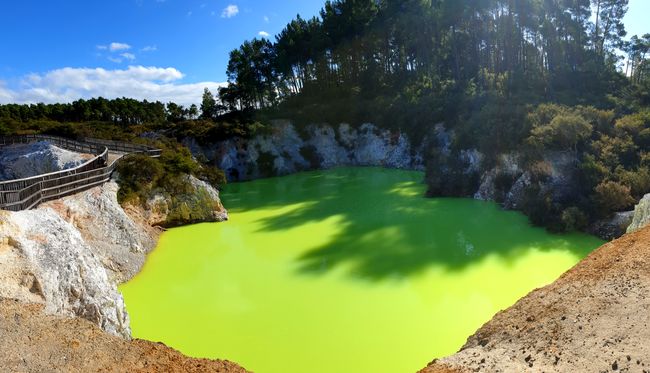
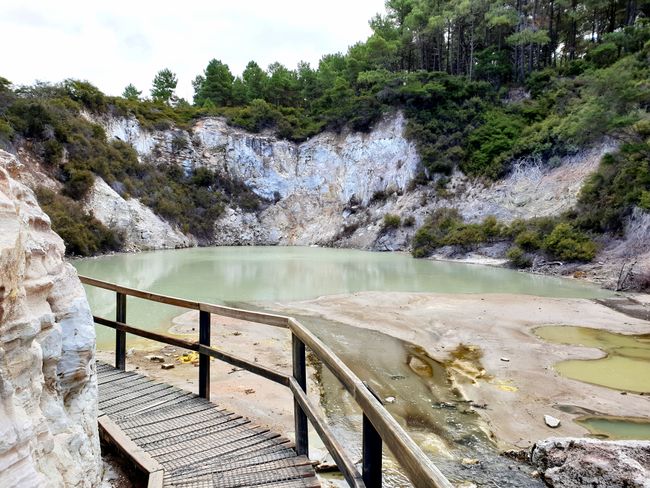
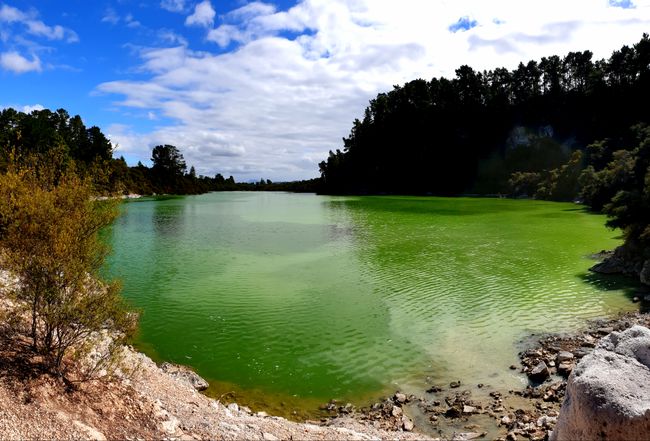
Willakuy qillqaman qillqakuy
(Rotorua - Waimangu Volcanic Valley - Wai-O-Tapu)
Rotorua is a city on the New Zealand North Island, located on a lake of the same name. The region is known for its geothermal activity and rich Maori culture.
As soon as we drove into the city, we could smell the odor of rotten eggs. After our time in Java, Mario and I immediately knew what that meant: sulfur. The whole city constantly smells like sulfur, even in our hostel, the smell was embedded in the walls. We quickly agreed that despite Rotorua being a really beautiful town, the smell is unbearable. One of the attractions in Rotorua is the Whakarewarewa Valley of Te Puia, which is an old Maori village with bubbling mud pools and the Pohutu Geyser, known for its daily eruptions reaching heights of up to 30 meters. We were able to see some of the eruptions, although none reached a height of 30 meters. In this valley, the smell of sulfur is especially intense, yet Maoris still live here. We visited the village, which is a paid attraction for visitors. Aside from all the sulfur and mud pools, visitors are also treated to a traditional Maori dance and can take a guided tour of the village with a real Maori guide.
Not yet satisfied with all the sulfur, the next day we visited the Waimangu Volcanic Valley and Wai-O-Tapu.
The Waimangu Volcanic Valley is a rift valley about 25 km south of Rotorua. It was formed on June 10, 1886, through an eruption of Mount Tarawera. At that time, about 150 people from the surrounding villages died during the eruption. According to current knowledge, 22 craters of the volcano erupted simultaneously at around three o'clock in the morning. They spewed out mud, magma, and large amounts of ash over a length of 17 kilometers. Entire towns were destroyed in an instant. The famous Pink and White Terraces - New Zealand's former tourist magnets - disappeared completely. Instead, a 100-meter deep crater appeared in the same location. Today, the area has calmed down, so there is no immediate threat of an eruption. But who really knows... The area around the former volcano is now the world's youngest thermal area. For the first time, scientists, geologists, and naturalists were able to observe nature reclaiming a devastated volcanic landscape over the past 125 years.
Nature has done this quickly and efficiently. Fortunately for today's tourists, Waimangu Volcanic Valley is now accessible to everyone - including us.
The highlights there are the Frying Pan Lake and the Inferno Crater. The Frying Pan Lake is the largest thermal lake in the world. The lake is on average 6 meters deep and has an acidic pH value of 3.5 and an average water temperature of 55°C. Carbon dioxide and hydrogen sulfide continuously rise from the lake, earning it the name Frying Pan Lake. The bubbling and rippling of the rising vapors make it seem like the water is boiling. The Inferno Crater is the largest geyser-like formation on Earth. However, instead of shooting a fountain into the sky, it fills and empties its basin in a calm 38-day rhythm. The water at the top of the basin is thus essentially the top of the geyser. The 80°C hot and acidic water rises about 8 meters within 3-4 weeks, flows over the rim, and then slowly sinks back down. The turquoise blue lake, which is very beautiful to look at, is a maximum of 30 meters deep. Somehow, the Inferno Crater and the Frying Pan Lake are connected underground. When the water level of one lake rises, the water level of the other drops. Nature likes to experiment.
Wai-O-Tapu Thermal Wonderland is an 18 square kilometer geothermal area in the Waikato region. Waiotapu means "sacred water" in Maori. The Thermal Wonderland is a leisure nature park that has developed around the geological attractions that are closely located here. The geothermally active area was formed around 160,000 years ago: hot springs, craters emitting sulfur fumes, geysers, and bubbling mud pools define the park. The highlights have names that sound so melodious, such as "Devils Bath
Willakuy qillqaman qillqakuy
Kutichiy
